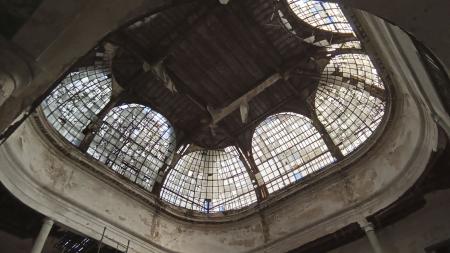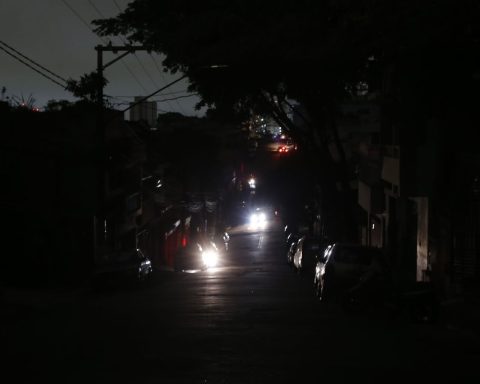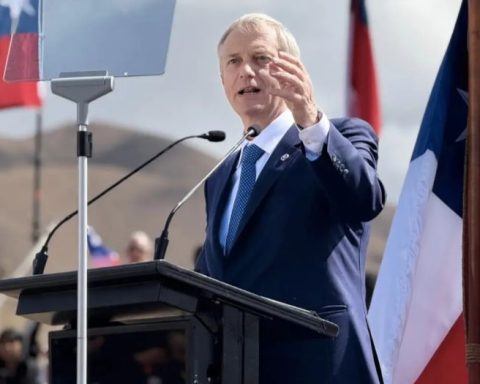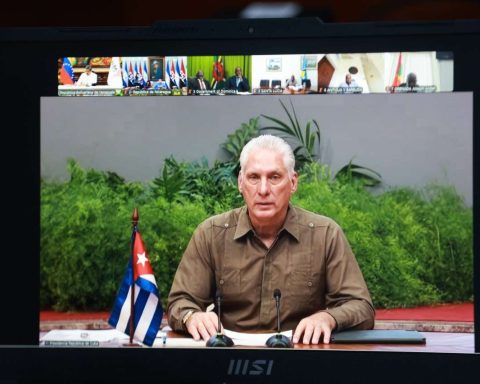The recovery project of the “Centennial Pavilion”, the only building that remains standing of the 35 that were built in Buenos Aires to celebrate the 100th anniversary of the May Revolution, has already started and the restoration works themselves “They will begin in August” to comply with the “emblematic ruling” of the Supreme Court of Justice that ordered “to restore its original patrimonial status.”
The building in question, the work of the Italian architect Virgilio Colombo and his eclectic modernism “Liberty” style, is located on the property comprised of Bullrich avenue, Cerviño street and the Miter railway tracks in the Buenos Aires neighborhood of Palermo, on plots that they belong to the Argentine Army but since 1994 they have been concessioned to the multinational company of Chilean origin Cencosud, owner of large supermarket chains such as Jumbo, Easy and Disco.
“We have formed an articulation table that meets every 20 days and all the progress is communicated to the court in a highly enriching process,” Mónica Capano, president of the National Commission of Monuments, Places and Historical Assets, told Télam ( CNMLBH).
Pilar Giribone, director of Cultural Management of the Ministry of Defense, explained that it will be this ministry together with the Army that “will define the functionality of the Centennial Pavilion.”
This working group – which includes the Commission, the Argentine Army, the Ministry of Defense and the Cencosud company – has already agreed on a “schedule” with established deadlines according to which “the (restoration) works have to begin in August” proper, given that until now only “the area to be intervened was cleared and cleaned, while an archaeological survey was carried out in order to discover original pieces.”
Subsequently, the scaffolding will be assembled to allow access to the different sectors of the building and samples will be taken to reveal the pathologies, after which an accurate diagnosis will be issued to propose the appropriate treatment.
Based on this, the company Cencosud must prepare an intervention project that will be analyzed and evaluated before the start of the restoration tasks based on the use that has been decided to give the property.

Pilar Giribone, director of Cultural Management of the Ministry of Defense, explained that it will be this portfolio, together with the Army, who “will define the functionality of the Centennial Pavilion”, based on “the work of its professionals, architects, museologists and curators”, a proposal that ” will be submitted to the CNMLBH for its final formulation”.
One of the clauses of the concession signed with Cencosud already specified that the company had to carry out the “recycling” of the building “until achieving a degree of completion similar to the one it originally had, also including the maintenance of its exterior facades, ornaments and related devices, during the duration of the contract and/or its extensions”.
As The company failed in this commitment, allowing the building to deteriorate. In 2014, it was sued by the Army, which managed to get the Justice to agree in the first and second instance.

Definitely settling the matter, The Supreme Court rejected a complaint appeal and thus ratified that “the concessionaire’s obligation remains intact”, with which “it must subject the execution of maintenance and restoration works to the recommendations made by the CNMLBH” by virtue of which in 2010 the Pavilion was declared a Historical Monument.
“The Court’s ruling is very exhaustive and – in terms of patrimonial issues – very unique because it not only forces the monument to be restored, but also goes further when it orders it to return to its original state,” said Capano.
The expert explained that “there were no known court rulings in favor of the preservation of the architectural heritage that were so forceful”, but “there was no record of arrival at the Court either”; That is why “it will be an emblematic case” that also involves “a very important multinational private company.”
“The Court’s ruling is very exhaustive and – in terms of patrimonial issues – very unique because it not only forces the monument to be restored, but also goes further when it orders it to return to its original state”Mónica Capano-President of the National Commission of Monuments, Places and Historical Assets
The heritage building was built by virtue of Law 6,286 “on the celebration of the centenary celebrations” which, among other things, provided for the holding of five major international exhibitions – Agriculture and Livestock, Railways, Hygiene, Fine Arts and Industry- mounted in different public spaces located in the northern area of the city of Buenos Aires, between Plaza San Martín and Parque Tres de Febrero.
What is known today as the “Centennial Pavilion” was actually the “Great Central Pavilion of the Postal Service” of the “International Railway and Land Transport Exhibition” which opened in July 1910 and could be visited until January 1911.
This great fair destined to show the latest advances in the mechanical industry at the height of the automobile and the railway, had seven large removable iron and glass buildings, one for each of the participating countries.

Of all this complex that occupied an area of nine hectares, only the Central Pavilion remains, a rectangular building with a vaulted entrance hall that in its original version had a glass dome with a globe-shaped top supported by female figures. with intertwined hands, smaller needle-shaped finials on the sides, a profusion of ornaments and delicate blacksmith work in its openings.
In a “state of abandonment”, “sunken”, in danger of collapsing and visibly “vandalised”, little of what was left allows us to evoke that ancient splendor, according to Capano.
“The building has a more than significant deterioration and even the floor boards are missing. In addition, the losses from some precarious material baths that are a few centimeters from the Pavilion, caused the corrosion of the metals,” Capano said.

A harmful environment for the conservation of the building is completed by “the appearance of a ficus that is causing cracks in the building” and the proximity of “a ramp through which trucks loaded with materials continue to go up and down” whose vibrations impact the structure.
For this reason, Capano explains that “a buffer area” will be key to the viability of the project.
“The company is going to work on materiality while the Army, the Ministry of Defense and we are going to work on the recovery of the intangible dimension of this heritage, which will also support the use that is given to it,” explained the specialist. in cultural heritage.
The heritage building was built by virtue of Law 6,286 “on the celebration of the centenary celebrations” which, among other things, provided for the holding of five major international exhibitions – Agriculture and Livestock, Railways, Hygiene, Fine Arts and Industry- mounted in different public spaces
The Centenary celebrations were held under the state of siege declared by then President José Figueroa Alcorta in the face of what was growing social unrest, which resulted in strikes and anarchist attacks.
They were boom times of the agro-export model in which the country had become one of the most thriving and powerful economies in the world while receiving large waves of migrants from Europe.
“There were celebrations on the one hand and struggles of workers and workers who demanded their rights in the context of a state of siege, an aspect that is not usually shown, because it seems that at that time everything was progress until the big blows like the first war came. worldwide, and all this has to be reflected (in this monument)”, he concluded.


















